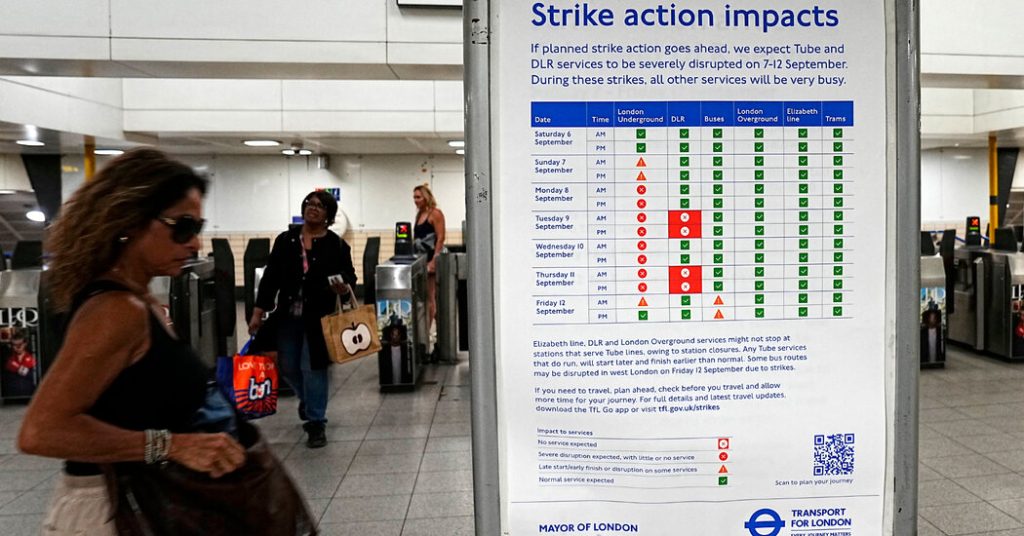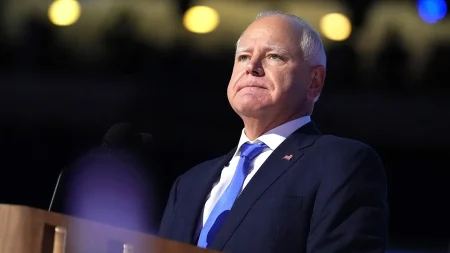London Underground Strike Paralyzes Capital’s Transit System, Affecting Millions of Commuters
Major Disruption Begins as Five-Day Tube Strike Launches Over Worker Conditions
A comprehensive five-day strike affecting London’s iconic Underground system began Sunday, creating what transportation officials warn will be a week of unprecedented disruption across the British capital. The industrial action, organized by the National Union of Rail, Maritime and Transport Workers (RMT), threatens to severely impact the daily commutes of up to five million passengers who typically rely on the extensive network that serves as London’s primary public transportation artery.
Transport for London (TfL), the city’s transit authority, has issued stark warnings that commuters should expect “little or no service” across the Underground network from Monday through Thursday, with limited operations on Sunday. The strike’s timing creates particular challenges for London’s economy, as businesses and services that have adapted to post-pandemic work patterns now face significant logistical hurdles. The Underground system, colloquially known as the Tube, comprises 11 lines and 272 stations that form a comprehensive network connecting central London with its sprawling suburbs – a system that has become essential to the city’s functioning since its first line opened in 1863.
“This industrial action represents a serious challenge to London’s infrastructure at a critical time,” said transportation analyst Martin Davies. “With five million passenger journeys typically taking place each weekday, the ripple effects will extend beyond mere inconvenience into economic impacts for businesses, lost productivity, and significant strain on alternative transportation methods.”
Union Cites Fatigue, Shift Patterns, and Pay Disputes as Central to Industrial Action
The RMT union, which represents thousands of Underground workers, announced the strike plans last month following what they describe as management’s failure to address critical workplace concerns. The industrial action involves different categories of workers striking on a rolling basis throughout the week. According to union statements, the primary issues driving the action include worker fatigue, “extreme shift patterns,” inadequate pay adjustments, and management’s alleged failure to honor previous agreements made with staff.
“The strikes come after management refused to engage seriously with union demands on pay, fatigue management, extreme shift patterns and a reduction in the working week,” the RMT explained in an official statement. Union representatives have emphasized that the action comes as a last resort after attempts to negotiate constructive solutions reportedly stalled. Labor relations experts note that fatigue management has become an increasingly prominent issue in transportation worker negotiations globally, with research linking worker exhaustion to both personal health concerns and potential safety implications for transit systems.
TfL has countered the union’s claims, stating that it has offered a 3.4 percent pay increase to union members and remains open to further discussion. “We are working hard to resolve the dispute,” said Claire Mann, chief operating officer at Transport for London. “We remain open for discussions about any part of our offer.” The standoff highlights the complex balance between operational efficiency, financial constraints, and worker welfare in managing one of the world’s most extensive urban transit networks.
Commuters Forced to Seek Alternative Transport Solutions
With the Underground largely unavailable, millions of Londoners and visitors must now navigate alternative transportation options in a city already known for its congested roads. TfL has advised that while other transportation services – including the relatively new Elizabeth line that runs east to west across London and the London Overground network – will continue operating, these systems “may operate differently” during the strike period and will likely face exceptional crowding.
“People who need to travel in the capital should consider walking or cycling,” TfL advised in public announcements, acknowledging that roads and other transport services such as buses were likely to be “extremely busy and subject to delay.” Transportation experts predict significant spillover effects on London’s road network, with increased private vehicle use, rideshare services, and bicycle traffic creating potential gridlock in central areas. Apps offering bicycle and scooter rentals reported surges in downloads ahead of the strike, while many employers have implemented temporary remote work policies to mitigate disruption.
The strike’s impact extends beyond the Underground itself, with the Docklands Light Railway in east and southeast London also facing closures on Tuesday and Thursday. This compounds the challenge for commuters in those areas, particularly affecting the financial district around Canary Wharf. TfL has confirmed that Underground service will remain suspended before 8 a.m. on Friday, though they expect operations to normalize across all lines by late morning that day, marking the end of what many transportation officials describe as one of the most disruptive transit strikes in recent London history.
Economic Impact and Political Dimensions Emerge
Economic analysts estimate that the five-day disruption could cost London’s economy tens of millions of pounds in lost productivity, retail spending, and tourism revenue. The Federation of Small Businesses has expressed particular concern about the impact on smaller enterprises that lack the flexibility of larger corporations to implement remote working solutions. Hospitality venues, which rely heavily on evening commuters, anticipate significant revenue reductions during what would typically be a busy early summer period.
“This strike occurs at a particularly challenging time for London’s business community,” said economic researcher Sarah Mitchell. “Many businesses are still navigating post-pandemic recovery and dealing with increased operational costs. A week of transit disruption creates another significant hurdle.” Tourism officials have also raised concerns about the strike’s timing coinciding with the beginning of London’s peak visitor season, potentially damaging the city’s reputation among international travelers.
The industrial action has inevitably taken on political dimensions, with local officials and national politicians weighing in on the dispute. London Mayor Sadiq Khan has called for both sides to return to negotiations, emphasizing the critical importance of the Underground to the city’s functioning. “While I understand the concerns raised by transport workers, a strike of this magnitude has profound consequences for ordinary Londoners,” Khan stated. “I urge both TfL management and union representatives to find common ground that addresses legitimate workplace concerns while maintaining this essential public service.”
Looking Beyond the Current Dispute: Future of London’s Transit Labor Relations
As the immediate disruption unfolds, transportation experts and labor analysts are already considering the longer-term implications for London’s transit system and its workforce relations. The current dispute highlights evolving expectations around work conditions in essential public services, particularly as technology enables more intensive monitoring and scheduling of worker activities.
“What we’re seeing in London reflects broader trends in transportation worker concerns globally,” noted labor relations specialist Dr. Emma Thompson. “Issues around fatigue management, schedule predictability, and the intensification of work have become central to transit worker negotiations from New York to Tokyo.” Some industry observers suggest that this strike may represent a watershed moment in how transport authorities approach scheduling, shift patterns, and workload management in systems that face constant pressure to maximize efficiency while maintaining safety standards.
TfL has emphasized that there will be no Underground service before 8 a.m. on Friday, though they anticipate normal operations resuming across all lines by late morning as the strike concludes. For millions of Londoners, however, the week’s disruption serves as a stark reminder of their dependence on a transportation network that, despite occasional disputes, remains fundamental to the capital’s identity and functionality. As both sides work toward potential resolution, the underlying question remains whether this disruption might ultimately lead to more sustainable approaches to managing the delicate balance between operational demands and worker welfare in one of the world’s most iconic transit systems.










